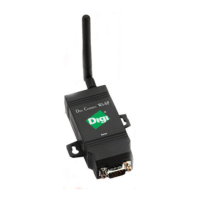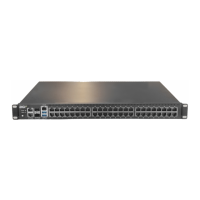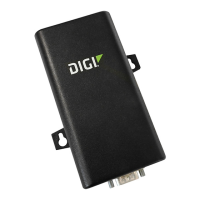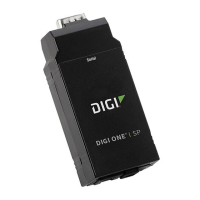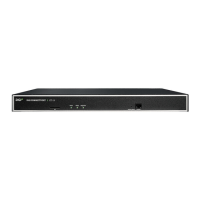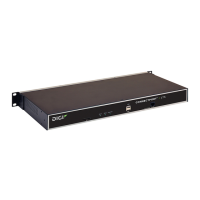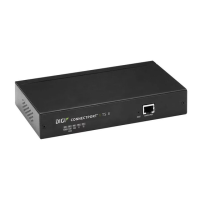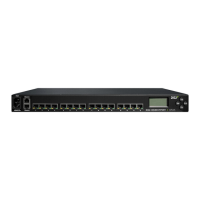Digi Connect and ConnectPort TS Family web interface Configuration through the web interface
Digi Connect Family and ConnectPort TS Family
52
l Each part of the name may be from 1 to 63 characters in length, and the full host name
may be up to 127 characters in length. An IP address is not permitted for use in this host
name setting.
n Static Primary DNS
Static Secondary DNS: The IP address of Domain Name Servers (DNS) used to resolve
computer host names to IP addresses. Static DNS servers are specified independently of any
network interface and its connection state. An IP address of 0.0.0.0 indicates no server is
specified.
n DNS Priority: A list of DNS servers in priority order used to resolve computer host names. Each
type of server is tried, starting with the first in the list. For each server type, the primary server
is tried first. If no response is received, then the secondary server is tried. If neither server can
be contacted, the next server type in the list is tried.
A network interface may obtain a DNS server from DHCP or other means when it is connected.
If an interface does not obtain a DNS server, it will be skipped and the next server in the
priority list will be tried.
To change the priority order, select an item from the list and press the up or down arrow.
Ethernet interface
n Speed: The Ethernet speed the Digi device uses on the Ethernet network.
l 10: The device operates at 10 megabits per second (Mbps) only.
l 100: The device operates at 100 Mbps only.
l auto: The device senses the Ethernet speed of the network and adjusts automatically.
The default is auto. If one side of the Ethernet connection is using auto (negotiating), the other
side can set the Ethernet speed to whatever value is desired. Or, if the other side is set for 100
Mbps, this side must use 100 Mbps.
n Duplex Mode: The mode the Digi device uses to communicate on the Ethernet network.
Specify one of the following:
l half: The device communicates in half-duplex mode.
l full: The device communicates in full-duplex mode.
l auto: The device senses the mode used on the network and adjusts automatically.
The default is half. If one side of the Ethernet connection is using auto, the other side can set
the duplex value to whatever is desired. If one side uses a fixed value (for example, half-duplex),
the other side has to use the same.
